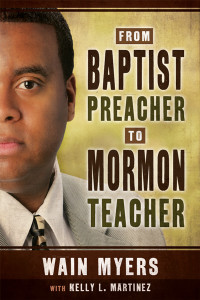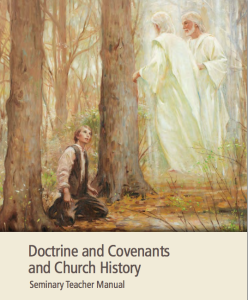Podcast: Download (50.6MB)
Subscribe: RSS
 Wain Myers is a native of Dayton, Ohio and a graduate of John H. Patterson High School where he was a state discus champion and musician. After graduation, Wain enlisted in the United States Army and served a tour of duty in Bad Kissingen, Germany. After his military career, Wain returned to the U.S. and began preaching at True Vine Missionary Baptist church. Where he preached for over five years and was then introduced to the LDS church by his now lovely wife Sebrina.
Wain Myers is a native of Dayton, Ohio and a graduate of John H. Patterson High School where he was a state discus champion and musician. After graduation, Wain enlisted in the United States Army and served a tour of duty in Bad Kissingen, Germany. After his military career, Wain returned to the U.S. and began preaching at True Vine Missionary Baptist church. Where he preached for over five years and was then introduced to the LDS church by his now lovely wife Sebrina.
Wain developed a passion for finance after his military career and enrolled in the Alpha & Omega College Real Estate in Virginia Beach, Virginia, and became a loan originator in 2007. Investing into his insurance business, he and his family moved to Terre Haut, Indiana, in 2009. Wain became very active in the Terre Haute community.
Wain has also been an active member in The Church of Jesus Christ of the Latter-day Saints since 1995 and served on the Bloomington Indiana Stake High Council before moving to Salt Lake City, Utah, and being call as second counselor in the Genesis Group leadership.
Wain and Sebrina are the proud parents of seven amazing children; Le’Roy Jr., Isaiah; who is currently serving his mission in the Baton Rouge Louisiana mission, Bradford and his wife Paige, Quesley, Braxton, Spencer, and Ammon.
QUESTIONS ADDRESSED IN THE INTERVIEW:
The story of you coming to find the church has some interesting twists and turns and would be a great way to get to know you. Would you tell us the story of your military career leading up to first starting as a baptist preacher?
What were some of the impressions that you had about the Mormon Church prior to becoming a member?
At one point in your story you had some difficulties with what has come to be called the Priesthood ban where those of black African decent were not allowed to hold the priesthood. You ended up having to come to terms with that and have since of course remained an active member. How did you view that part of church history, and how have you overcome it?
You are now involved in the Genesis Group. What is the Genesis Group?
You have a book coming out in October 2015 I believe called, at for now, From Baptist Preacher to Mormon Teacher. The title might be a little obvious, but what will the book be about?



